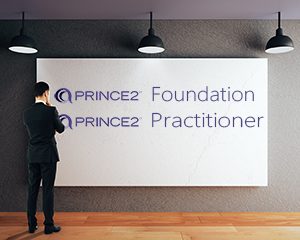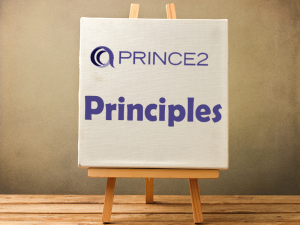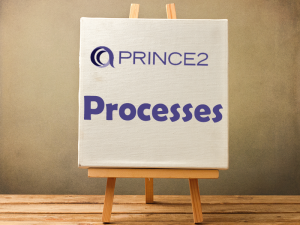
PRINCE2 is one of the world’s most used project management methodologies, driving projects from infrastructure to I.T. Like the engine inside a car, it is the invisible, behind the component that ensures the project gets where it needs to go.
But to get you to your destination it needs to be maintained and serviced, and project managers must maintain the method or it will depreciate its value faster than you can drive it off the lot.
Management
The PRINCE2 methodology is maintained by a company called Axelos, which is partially owned by the UK government (at the time of this writing). It was originally developed by the UK government and many government projects still require PRINCE2 certification in order to bid.
Naturally, PRINCE2 is prominent in the UK, and a 2016 study by Axelos found that 44% of PRINCE2 certification holders were based there.
The PRINCE2 Methodology
PRINCE2 covers the delivery of projects, like project plans, stakeholders, and communication. It does not cover the project management theory like earned value management, the critical path method, and project scheduling. Hence, it establishes a code of policies and procedures which standardizes project delivery, creating a methodology for project management.
PRINCE2 is like the steering that ensures that the engine goes to the correct destination.
The creation of 26 standard project management documents, called products, standardizing communication of project management tasks.
PRINCE2 Certification
 Certification is a great way to advance your career, and PRINCE2 is one of the best ways to do that.
Certification is a great way to advance your career, and PRINCE2 is one of the best ways to do that.
PRINCE2 is significantly easier to obtain than its primary competitor, the Project Management Institute’s (PMI) PMP or CAPM certifications. Unlike PMI, there are no required courses and no prior project management experience necessary. One can simply read the manual and register for the exam online. That being said, most people take a short 3-4 day course which includes the exam.
There are two levels of certification. PRINCE2 Practitioner is the main one, and PRINCE2 Foundation is the ‘technician’ level certification aimed more at folks who have little or no project management experience. However, one of the best aspects of PRINCE2 is that you can go directly to the Practitioner level without any further courses or experience, so this is what most people do.
That being said, you have to write the Foundation exam before the Practitioner exam regardless.
 PRINCE2 Principles
PRINCE2 Principles
Differentiating itself from the Project Management Institute‘s methodology, the PRINCE2 Principles are like guiding doctrines that govern the delivery of all PRINCE2 projects. They are considered mandatory, but cover the ‘softer’ aspects of project management which are harder to measure. The seven PRINCE2 Principles are:
- Continued business justification
Every project produces some sort of unique product or service. Often, projects can be so focused on delivering this product or service that the underlying business need is forgotten. That is, the product or service can be spectacular, but it doesn’t get used. For this reason, PRINCE2 requires the business justification be documented in the form of a Business Case, which must be confirmed by the Project Board at each stage boundary. The Business Case identifies the benefits that are realized by the project. - Learn from experience
Because projects produce a product or service that is unique, learning from experience is foundational to strong project management. Lessons learned from other projects, or from the parent organization (or from other organizations) should be investigated at the beginning, and continually gleaned for advice in decision making. The project itself should produce a Lessons Log to pass on its new found wisdom. - Defined roles and responsibilities
The PRINCE2 project roles are very well defined. Some roles are played by the same person but they are all present and addressed in the project plans. The project roles are:- Executive
- Project Board
- Project Manager
- Project Assurance
- Change Authority
- Team Manager
- Project Support
- Senior Supplier
- Senior User
- Manage by Stages
By definition, PRINCE2 projects are separated in management stages, which are subdivisions of the project into smaller, more manageable pieces. The stages can be chosen any way it is most convenient to the project manager, but usually project phases, major deliverables, or project team changes would be natural stage boundaries. At each stage boundary, the project plans must be reassessed, the previous stage must be evaluated, and the next stage must be planned and approved by the Project Board. - Manage by Exception
The Project Board is responsible for establishing ‘tolerances’ in six areas: Cost, time, quality, scope, benefits, and risk. Tolerances establish the limits of the project’s approval, and if they are breached, an Exception Plan must be presented to the Project Board by the Project Manager to bring the project back into acceptance. - Focus on Products
Projects have a sneaky way of moving along without realizing there is a final product that needs to be presented to a client or customer. This PRINCE2 Principle ensures that the final product is continually at the forefront of the project team’s efforts. - Tailor to suit the project
The PRINCE2 methodology is intended to be universally applied to all project environments, sizes, complexities, and industries. Hence, some adjustments are required to ensure its suitability to each project. Tailoring is built into every area of the method, and the project manager needs to ensure the method is used most effectively.
PRINCE2 Themes
 Themes are knowledge areas that are utilized throughout the project whenever necessary. They are the oil which permeates all parts of the engine and keeps it running smoothly.
Themes are knowledge areas that are utilized throughout the project whenever necessary. They are the oil which permeates all parts of the engine and keeps it running smoothly.
- Business case
As described in the first PRINCE2 Principle, the project’s business justification is paramount to a successful project. It doesn’t matter how earth shattering a project’s end product is if nobody is using it, or the business is not realizing the benefits. Hence, the Business Case theme involves the maintenance of the namesake Business Case document which outlines the benefits the product is intended to achieve. The Business Case is reviewed and reconfirmed by the Project Board at each management stage boundary. - Organization
PRINCE2 has a well defined organizational chart which defines the roles and responsibilities in project delivery. These roles ensure that all areas of responsibility are covered by appropriate people. - Quality
The quality of a project’s end products in inherently a major consideration for most projects. Quality must be planned into the project, and measured throughout its life cycle as required. The measurement of final product quality is called quality control. - Plans
The foundation of all project management is planning. Someone must decide what the project will accomplish and how it will accomplish it. Plans establish a baseline for project control, that is, measuring the project’s progress to ensure it finishes on time, budget, and within any other specified tolerances. In PRINCE2, the plans theme includes the six main areas: Time, cost, quality, scope, benefits and risk. - Risk
An oft-overlooked theme, project risks should be identified, monitored, and controlled. PRINCE2 specifies the use of a Risk Register, a log of the risks the project faces, along with appropriate analysis which might include probability, severity, priority, and response plans. - Change
It is rare, in most industries, that projects finish at their original deadlines and budget. Since projects are by definition unique, they uncover items that require incorporation into the final product. PRINCE2 mandates the use of an Exception Plan when project deviate out of their defined tolerances, which replaces the Stage Plan for that stage. - Progress
This theme measures the actual project performance against the plan. The six target areas of time, cost, quality, scope, benefits, and risk are monitored and controlled, and any deviations outside of the tolerances are dealt with under the Change (previous) theme.
PRINCE2 Processes
 Finally, the PRINCE2 processes are chronological activities that are carried out throughout the project. They represent the physical work of managing the project, and serve as more of a task list to the project management team.
Finally, the PRINCE2 processes are chronological activities that are carried out throughout the project. They represent the physical work of managing the project, and serve as more of a task list to the project management team.
The seven processes are:
- Starting up a project
This occurs before the project is approved. It involves the planning and initiation of the project prior to a decision to proceed with it. - Directing a project
The project board performs most of the activities in this process, including authorizing of the project, a new stage, or project closure. It also includes giving ad hoc direction and advice during project execution. - Initiating a project
After a decision to proceed with the project is made, the project manager performs most of the tasks within this process. Establishing the project team and defining their roles, developing the project plans including schedule, budget, and scope, all fall within this process. The plans are submitted to the project board for approval to proceed with the second management stage (the first is the initiation stage). - Controlling a stage
Project control involves measuring the project’s actual progress against the plan. This can include schedule, budget, scope, or any other item within the plan. - Managing product delivery
The team manager, who reports to the project manager under the PRINCE2 roles and responsibilities structure, is responsible for performing the project’s technical work and creating the products. - Managing a stage boundary
When the end of a management stage is approaching, a series of actions are triggered. This involves the past, present, and future – that is, analyzing the previous management stage for lessons learned, preparing the new stage plans, and seeking approval from the project board to proceed with the next stage. - Closing a project
Finishing a project is usually a small part of the whole, but one of the most visible to senior managers and executives. These tasks occur in the final management stage and are usually performed by the project manager.
It’s an exciting time to become a project manager. Certification is growing by double digits all over the world, and PRINCE2 is a methodology that will keep your projects humming under the hood for a long time.
Good luck!






